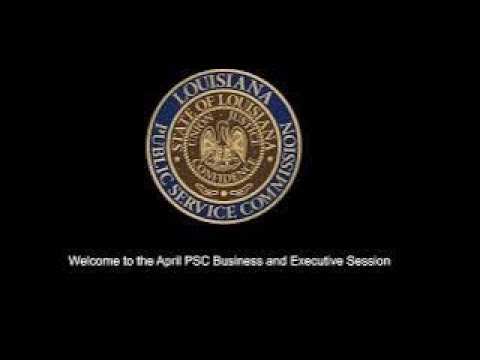How Have Unreliable Solar & Wind Penetrated the Grid So Deeply, and What of Reliability Concerns
We return to the insights of Russell Schussler
Louisiana’s energy is at risk from many forces, among them a Democrat Party that has demonized the oil and gas industry and objected to nuclear power, and complex associations and professional interactions that muffle any dissent.
Our goal is to continue to shed light and understanding on energy production and distribution, the grid, and our collective dependence on systems that keep us housed and healthy.
Energy is the “First Industry” and threats to our way of life must be understood and resisted.
We return to the insights of Russell Schussler to help us understand how, while placing grid reliability at risk, solar and wind elbowed their way in and have become an established component of energy production. Though they ‘fail at scale,’ we are stuck with them.
How could this have happened?
As you read this, keep in mind the words of Dr. Craig Green who sits on the Louisiana Public Service Commission:
“Every time a utility threatens us with an urgency, I just think, this is a plot or scheme.”
Silence of the Grid Experts
By: Russell Schussler
There are many reasons why grid experts within the electric utility industry have not spoken out when unrealistic “green” goals were being developed and promoted over the last 20 years or so. A more open debate during this period might have helped provide a more realistic foundation for future development. This posting describes some reasons why at the corporate level electric utilities did not speak out more in defense of grid reliability. Collectively these factors tended to eliminate grid experts from playing any role in the development of policies impacting the grid.
Speaking Out Risked Negative Consequences
Utilities have many stakeholders with varying degrees of power. Utilities depend on good relations with Public Service Commissions, other regulators, consumers and policy makers. The stereotype of electric utilities as uncaring, selfish, greedy destroyers of the environment tends to make utilities very cautious and careful in critiquing anything perceived as “green.” The media and press attention from any such statements would likely not be favorable.
Utilities need support to acquire right-of-way, for financing, for cost-recovery and to avoid adverse legislation.
Poor press and the associated public disapproval loomed as strong disincentives for speaking out.
Furthermore, as will be discussed later, expressing concerns over emerging reliability issues could be interpreted by some as implying that perhaps you were not as capable as others appear to be.
The Waiting Game: Short-Term versus Long-Term Goals
The short-term consequences of objecting to “green” initiatives impact were swift and near and would be specifically painful to the offending party. The potential benefits of speaking out on reliability would be collective, diffuse and farther into the future. Who as one of hundreds of utilities would want to be the first to speak out? The near-term burden of “green” goals at very low penetration levels was small enough that it might seem prudent to wait for others to speak up.
It can be observed already how these reasons worked together to stifle dissent. Areas with greatest pressures for green initiatives were held back because speaking out would have more severe consequences for them. Areas with lesser pressures were also less likely to be impacted in the near term, so they were less incentivized to speak out. Many hoped that maybe they could ride this out and learn from the mistakes of others. Unfortunately, mistakes and problems don’t seem to be slowing things down.
Utilities Are Not Experts, But Rather a Collection of Experts
There is not a single body of expertise commonly shared by the many experts that make up an electric utility. Rather, many experts have differing areas of expertise with demands that can place them at conflict with others. Effectively managing an electric utility is highly dependent upon balancing the input of many competing “experts.” The goals and priorities of large areas such budgeting, rates, maintenance, operating, environmental, planning, construction, compliance, marketing, R&D, legal, strategic planning, as well as sub areas within these, will often be in conflict with the actions a utility should take. Leaders have to weigh the inputs from these areas to provide direction and make decisions.
Competing Experts and Goals
Healthy competition is good and necessary. The goals of maintenance are worthwhile, but sometimes in order to best utilize our resources and address other concerns, utilities might need to temporarily depart from what the maintenance experts advocate. The experts in projects tell us how long it should take to complete a project. But in emergencies, other experts might insist that this project must be completed in a much shorter time frame to allow for an upcoming summer peak. Transmission planning and distribution planning experts within the utility might favor different solutions for correcting an area problem: do you beef up the area distribution or do you add more support from the transmission system? With conflicts of this sort, sometimes you find a compromise but other times one set of experts must give in.
There are many incentives for increasing wind and solar generation (if it works). For some areas of expertise, wind and solar integration pose no special problems. Experts and executives from these areas often were wind and solar boosters.
Similarly to academics, some utility experts argued that (some) problems with wind and solar could be solved, and it was often mistakenly interpreted to mean all problems could be solved.
During my career I would manage several different areas that at times would be in conflict. I would tell my key people, “You are the experts here. You must be a strong advocate for your area of responsibilities." Sometimes I and others in upper management will have to place other concerns over yours. You will need to be a team player and accept the situation. That doesn’t mean you should be any less of an advocate for these concerns in future situations.” Good management balances the inputs of different experts. Utilities found that near-term imperatives were in conflict with more distant reliability concerns. Unfortunately, it was almost exclusively the case that emerging reliability concerns were judged as something better addressed later.
Margin, Experts, and Who Are You Going to Believe?
In advocating for their specific areas of concerns, often experts will build in a little margin. I’ll use the example of budgeting here. Although it took me awhile to get on board, many people are probably familiar with how that process works. Initially when hearing of dire budget woes, I would heed the call and cut things as close to the bone as I could. Those of you who are not as naïve as I once was know that the next step is to squeeze even more out of EVERYONE. At that point it didn’t matter what you had given up in step 1, more was needed and everyone must contribute. My nature was to be a team player and heed the original call, but after getting burned a few times, I learned that I must play the margin game.
Competing experts should be “expected” to build in margin within their various areas of expertise. The projects area may pad their schedules with some extra time to give themselves some flexibility. Maintenance might aggressively schedule maintenance and replacement so that they are ok if hard times later put a cut in their resources. Initial designs of projects may be “Cadillac” level to better survive cost pushbacks which might emerge under review.
In the area of grid reliability, the grid depends on margin. It should survive without a hiccup for once every 50-year events, because hundreds or more of those type events can and will happen in the normal operation of a system. Conflations of equipment outages, extreme weather, and other unanticipated events hit the grid many times during a given year. The consequences can be huge. However, if you push back on reliability for a short time in one area, there’s a good chance you will be fine. Negative consequences will likely be unobservable. But continue to do so and severe consequences will begin to emerge.
The large chorus of outside “experts” saying that wind and solar can be successfully integrated complicated the situation. Executives with other responsibilities see that government, academics, consultants, consumers, policy makers, and experts within parts of the utility industry are all pushing higher levels of wind and solar. Similarly, the industry-sponsored research arms did not help much, but rather pushed new technology as well. Perhaps because they saw a “gold mine” in potential “green research projects.” This all lead to confusion around grid capabilities.
Lastly, grid experts were disregarded partly due to their great success in the past. The fact that modern power systems have a high degree of margin makes it harder to argue that the system is not sufficiently robust to allow for high penetration levels of wind and solar. The ability of grid engineers to meet emerging challenges to-date have led many to believe they could continue to do so, no matter what might be thrown at them.
Specialization and Silos
In addition to problems of breadth of expertise, problems around specialization also confound attempts at expert consensus. Understanding the full extent of emerging grid reliability problems requires an understanding of generation planning, transmission planning and systems operations. Intermittent, asynchronous wind and solar energy sources impact generation planning, transmission planning and system operators. These three areas have differing expertise and experts within these areas that are not always well informed of the concerns of the others. Generation Planners are concerned with providing generation 24 hours a day 367 days a year far into the future. They assume transmission planners will take care of delivery problems. Generation modelling is focused on energy production and they look at megawatt-hours. Transmission Planners are worried about the transmission system during peak times of stress. They make efforts to understand the implications of potential generation, but intermittent sources make that challenging. Their focus is based on demand levels so they look at megawatts. System Operators worry about issues of generation and transmission but they operate day to day and in the near term. Their focus is on dealing with the system as it is, not determining what it might be or handling scenarios in the far future. Further within these areas, there are specialists who go deep and do not well understand the problems within their own broader area.
Within critical areas around grid reliability, there are various specialists who may not see the big picture. For example, those who model the transmission system who may see problems now, may be optimistic or agnostic as to how future versions of wind and solar may work to better support the system. Those who work more directly with wind and solar and know their inherent capabilities probably don’t fully understand their impact on the transmission system. It takes an understanding of both areas to see the emerging problems that are confronting the system.
Hope and the Benefit of the Doubt
Despite what you may have heard, most engineers want to be environmentally responsible. Instead of being opposed to new technology, most of us have sought to support potential “green” applications that had at least small hopes of promise. I was never aware of anyone stacking the deck against “green” options, but the reverse frequently occurred. It’s evident that conventional generation options are productive many years longer than competing solar or wind options, but most comparative analyses assumed 30 year lives for all alternatives including Green ones. I don’t know of any significant objections to wind and solar leaning on the system a little for support, or raising costs a little. The concerns only came when the impacts are particularly egregious or approaching unsustainability.
The support for Green options extended to optimistic assumptions about future development, performance and capabilities of those resources. Often instead of focusing on what might be probable in the future, utilities hoped for what might be possible. Many have hoped that maybe wind and solar coupled with batteries and a lot of technological development will allow asynchronous intermittent wind and solar to replace higher levels of conventional synchronous generation. Such hopes have for many clouded the clear evidence that increasing levels of wind and solar presented reliability threats.
FERC and NERC’s Impacts
In the U.S., the Federal Energy Regulatory Commission (FERC) and the reliability oversight organization (NERC) that they empowered, have served to inhibit the industry from voicing reliability concerns. FERC’s open access policy and the resultant standards of conduct in 1996 have segregated the functions of generation planning and transmission planning. FERC’s goal was to prevent generation providers, who owned transmission as well, from having any competitive advantage over other generation providers. Previously, managers and VPs might have responsibility for both groups (as I did at one point), but FERC required that those functions be separated and it was important that information not be shared between them. FERC effectively shut down reliability discussions between in-house generation experts and transmission experts. Coordinating a reliable grid was well served by interplay, dialogue and coordination between those planning and managing generation and transmission. Understanding emerging problems similarly is best served by having experts with a sound grounding in both generation and transmission.
NERC and the regional reliability entities initially were formed and controlled by the utilities to coordinate reliability efforts amongst the participants. In 2006 FERC established NERC as the national reliability organization with enforcement powers. Making NERC the master over utilities versus their servant has had various consequences. Beginning in 2007, NERC and the regional entities could impose large fines for violating NERCs’ reliability criteria. Before that time, utilities would share any problems in an open and frank manner at reliability meetings. Despite utility’s differences, there was a strong joint commitment to reliability and all felt it was best to learn from each other’s mistakes. But when the regulators had the ability to impose fines of a million dollars a day, it no longer made sense to share reliability concerns. Publicly expressing reliability concerns might predispose NERC to lean towards findings of noncompliance should problems emerge.
Perhaps the greatest impact came in the shift of responsibilities. Utilities used to have responsibility for ensuring reliability. They had skin in the game. They had a number of tools including generation and transmission options to better ensure reliability. But regulation by FERC, through NERC, took the reliability function away from utilities. Utilities are no longer responsible for ensuring reliability. They are responsible for compliance with reliability standards. That was a profound and consequential change. Utilities are no longer developing reliability experts; they are developing experts in standards compliance. When outages occur, it’s hard to figure out where blame lies now. Will there ever again be grid experts who have skin in the game?
Summary and Conclusions
There were a lot of utility experts with grid concerns. You might ask, “Why didn’t more people speak up?” But maybe the better question is, “Why would anyone speak up?”
A lot of people could have said the type things I started saying about a decade ago, but they had no incentive to speak out and there were few influential people who cared to listen.
In summary:
There were few to no near-term incentives for individual utility experts or for utilities corporately to speak up regarding planned threats to reliability
There were significant near-term disincentives for speaking up
Limited to no platforms for voicing concerns
Waiting and hoping for others to speak up seemed a prudent path for many
Competing experts and diverse areas of specialization confused understandings of risk
Past success of grid experts made it harder to take future reliability threats seriously
Strong widely-present desires support “clean” wind and solar
Federal actions served to quiet dissenting voices and eventually remove dissenting experts
The days of utility-based grid experts who’ve had skin in the game are over. Utility experts are charged with complying with reliability standards rather than maintaining reliability. Where utilities once had a variety of tools at their disposal to better foresee and forestall reliability problems, utilities now follow compliance standards and hope for the best.
Read the article here (though I present it above without the many typos and such errors.)
And please look through our many germane articles on Louisiana energy issues:






